The Matter of Time | Richard Serra

Forming of the plates for The Matter of Time at Pickhan Umformtechnik, Siegen, Germany

Serra (center) and others installing One Ton Prop (House of Cards) at the Museum of Art, RISD, Providence, 1969

Robert Smithson and Richard Serra, 1970

Frames from Hand Catching Lead, 1968

Tilted Arc, 1981. Weatherproof steel, cylindrical section tilted into the ground, 12′ x 120′ (3.66 x 36.58 m), plate thickness 2½” (6.5 cm). General Services Administration, Washington D.C. Installed at Federal Plaza, New York, 1981-89; destroyed by the United States Government, 1989.

Installation of To Encircle Base Plate Hexagram, Right Angles Inverted at 183rd Street and Webster Avenue, Bronx, New York, 1970.

Shift, 1970-72. Concrete, six sections; section one: 5′ x 240′ (1.52 x 73.15 m); section two: 5′ x 150′ (1.52 x 45.72 m); section three: 5′ x 120′ (1.52 x 36.57 m); section four: 5′ x 105′ (1.52 x 32 m); section five 5′ x 110′ (1.52 x 33.52 m); section six 5′ x 90′ (1.52 x 27.43 m); section thickness: 8″ (20 cm). Installed in King City, Ontario, Canada.

Serpentine, 1993. Weatherproof steel, two units, each comprised of two conical sections, each section: 13’2″ x 52′ (4 x 15.85 m); length overall: 104′ (31.7 m): plate thickness 2″ (5 cm). Collection of Frances and John Bowes, Sonoma, California.

Torqued Ellipse II, 1996. Weatherproof steel, 12′ 29′ x 20’5″ (3.66 x 8.83 x 6.22 m); plate thickness: 2″ (5 cm). Dia Art Foundation. Gift of Leonard and Louise Riggio.

Afangar (Stations, Stops on the Road, to Stop and Look: Forward and Back, to Take It All In), 1990. Basalt, eighteen stones; nine: 9’10” x 1’9″ x 1’9″ (3 x .55 x .55 m): nine: 13’1½” x 1’9″ x 1’9″ (4 x .55 x .55 m). City of Reykjavik, Iceland. Installed Videy Island, Reykjavik Harbor.

Richard Serra, photographed by Robert Frank, 2002
The List:
To roll, to crease, to fold, to store, to bend, to shorten, to twist,
to dapple, to crumple, to shave, to tear, to chip, to split, to cut,
to sever, to drop, to remove, to simplify, to differ, to disarrange,
to open, to mix, to splash, to knot, to spell, to droop, to flow,
to curve, to lift, to inlay, to impress, to fire, to flood, to smear,
to rotate, to swirl, to support, to hook, to suspend, to spread,
to hang, to collect –
of tension, of gravity, of entropy, of nature, of grouping,
of layering, of felting –
to grasp, to tighten, to bundle, to heap, to gather, to scatter,
to arrange, to repair, to discard, to pair, to distribute, to surfeit,
to complement, to enclose, to surround, to encircle, to hide,
to cover, to wrap, to dig, to tie, to bind, to weave, to join,
to match to laminate, to bond, to hinge, to mark, to expand,
to dilute, to light, to modulate, to distill –
of waves, of electromagnetism, of inertia, of ionization,
of polarization, of refraction, of simultaneity, of tides, of reflection,
of equilibrium, of symmetry, of friction –
to stretch, to bounce, to ease, to spray, to systematize,
to refer, to force –
of mapping, of location, of context, of time, of carbonization –
to continue.
The “Verb list” established a logic whereby the process that constituted a sculpture remains transparent. Anyone can reconstruct the process of the making by viewing the residue.
The sculptures resulting from the “Verb list” introduced two aspects of time: the condensed time of their making and the durational time of their viewing.
Both tasks and materials were ordinary. I was tearing lead in place, lifting rubber in place, rolling and propping lead sheets, and melting lead and splashing it against the juncture between wall and floor. The activities were experimental and playful. It wasn’t the question of how to accomplish this or that, nor was it the question of making it up as I went along: it was rather a free-floating combination of both.
I cannot overemphasize the need for play, for in play you don’t extract yourself from your activity. In order to invent I felt it necessary to make art a practice of affirmative play or conceptual experimentation. The ambiguity of play and its transitional character provides suspension of belief whereby a shift in direction is possible when faced with a complexity that you don’t understand. Free from skepticism, play relinquishes control. Play allows one to accept discontinuities and continuities; it also allows one to happen upon solutions or invent them. However, even in play the task must be carried out with conviction. It’s how we do what we do that confers meaning on what we have done.
– Richard Serra (excerpt from Questions, Contradictions, Solutions, 2004)
___
The Matter of Time
Richard Serra : Hal Foster : Carmen Giménez : Kate D. Nesin
Steidl
2005
(This publication accompanies the installation of The Matter of Time at the Guggenheim Bilbao. Curated and organized by Carmen Giménez. Sponsored by Arcelor)
___
R
Drawings – Work Comes Out Of Work, Richard Serra

out-of-round III, 1999, paintstick on Hiromi paper.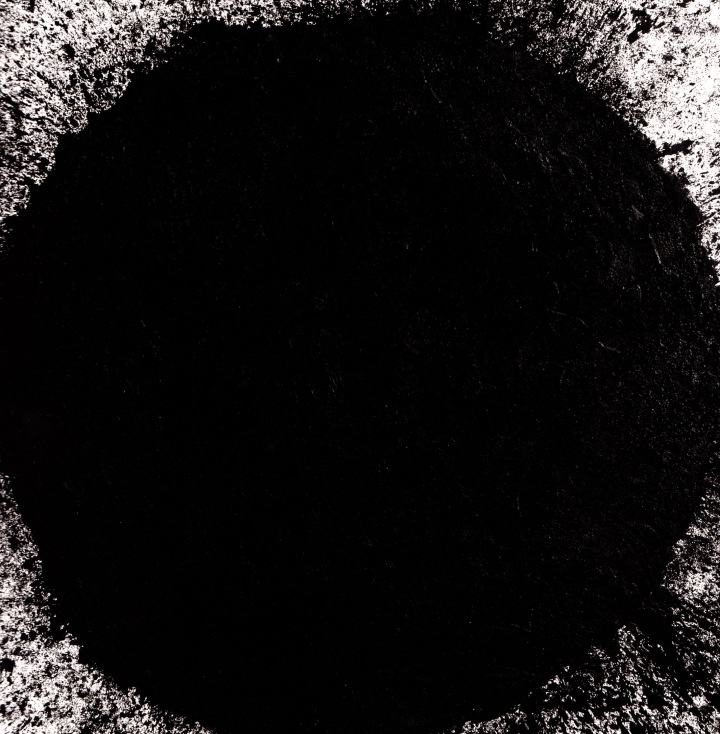
out-of-round X, 1999, paintstick on Hiromi paper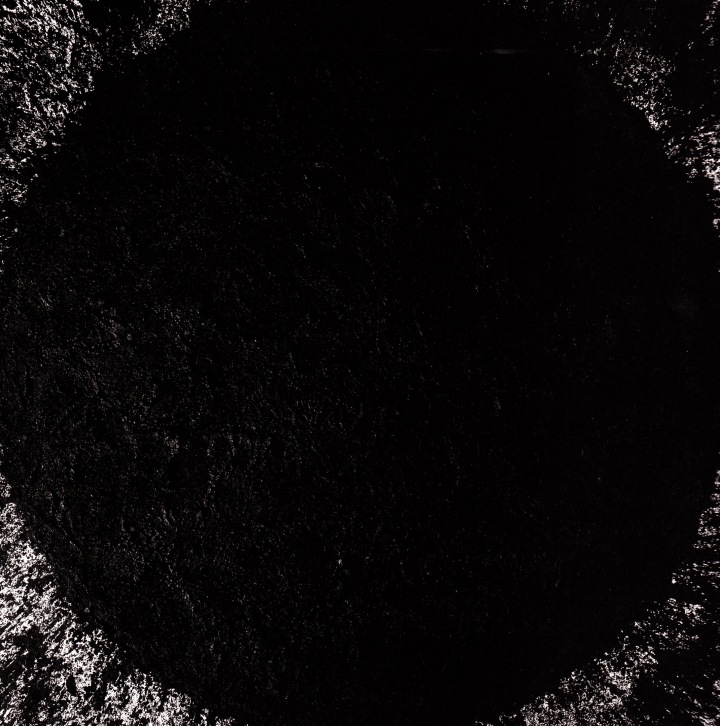
out-of-round XII, 1999, painstick on Hiromi paper.
“There is no way to make a drawing-there is only drawing”. Richard Serra, 1977.
Drawing is transformative. The English word “drawing” denotes pulling (as in “dragging”), and connotes revelation, unveiling, and uncovering: drawing a playing card or a pistol, for example. A “draw” is also a lottery, a process in which the participant must choose – without foreknowledge- from a number of possibilities, few of which will prove valuable. And there is also drawing as the extraction of something essential, such as water from a well or, more gruesomely, the viscera of a condemned man. Drawing is fundamental concept, an intimately connected with the raw terms of life as it is lived. Artists prize drawing not only for it’s inherent qualities, but also for its virtues as an impromptu, heuristic tool. Rapid and agile, drawing is easy to adjust, erase, supplant, emulate and if necessary – discard. It’s a fluid means of anticipation, often prior to translation into a more celebrated form. Painting and sculpture, giants both, stand on its more humble shoulders.
Paintstick: a type of waxy oil paint manufactured as a solid stick. It resembles an oversized crayon or crude drawing stylus; it’s an oil based pigment in the working form of chalk and graphite. Although paint stick is available in colours, Serra only uses black. Serra has devised an efficient way of applying paintstick over large areas, darkening a surface so thoroughly that it absorbs much of the available light in the room. He melts a number of individual sticks, then casts them into bricks of pigment ten to twelve inches long, six inches wide, and four inches thick – big enough to be grasped with both hands at once. This retooled paintstick loses its capacity to function as a stylus, becoming too thick to extend gestures of arm and hand into a rarefied grid of space, or to reduce solids to lines and planes through dematerialized geometry approaching absolute thinness. As it resists idealised figuration, Serra’s paintstick cultivates its thickness in material and metaphorical ways.
Richard Serra,
Drawings – Work Comes Out Of Work.
Edited by: Eckhard Schneider
Essays by: James Lawrence and Richard Shiff.
___
B
Te Tuhirangi Contour, Richard Serra
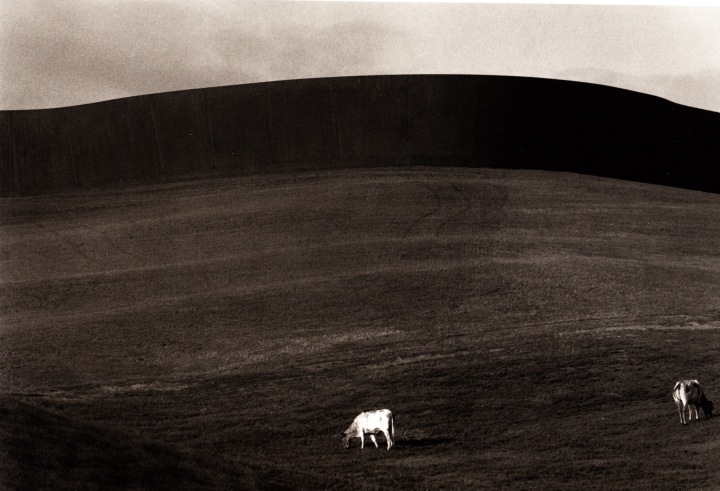
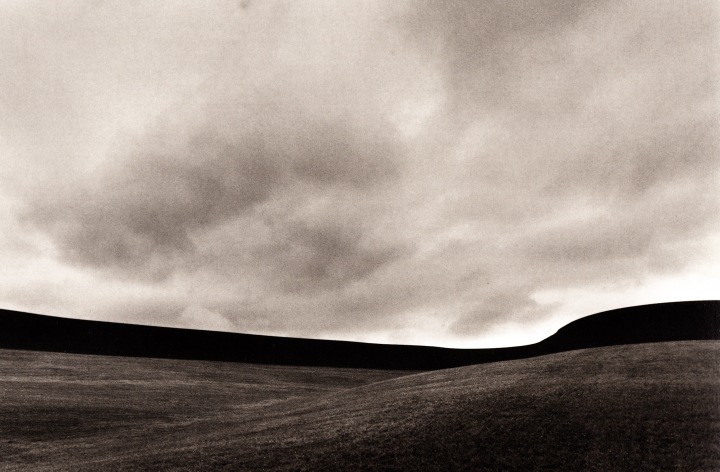
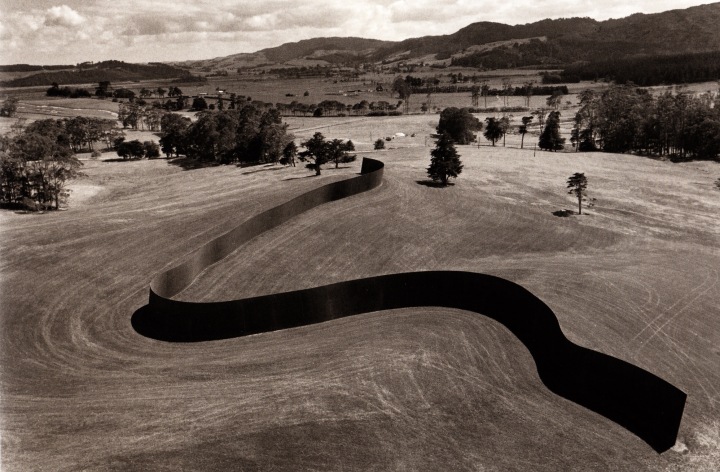
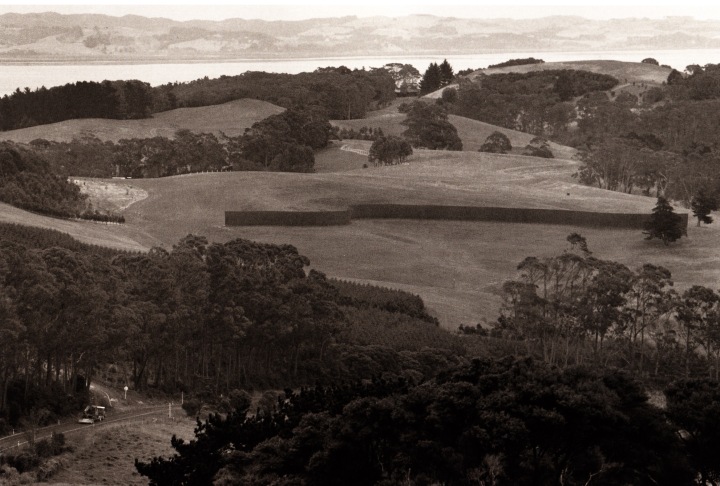
Te Tuhirangi Contour, Richard Serra, 1999/2001
Kaipara, North Island, New Zealand.
Weatherproof steel, 6m x 257m x 5cm.
The site of “Te Tuhirangi Contour” is on the Kaipara harbour, 45km north of Auckland. The site is a vast open grass pasture with rolling elevations. The elevational fall of the land establishes curvilinear contours. The sculpture is located on one continuos contour, at a length of 257m. The particular contour was chosen for its location, differentiation, contraction and expansion in relation to the volume of the landscape. The elevation of the sculpture is perpendicular to the fall of the land which generates its lean of 11 degrees. The work was mocked-up full scale in wood to determine height and length. All images by German photographer Dirk Reinartz.
___
B
![Shift [1970-1972]](https://i0.wp.com/farm4.static.flickr.com/3125/3099998470_ec3ff714b4_b.jpg)
1 comment